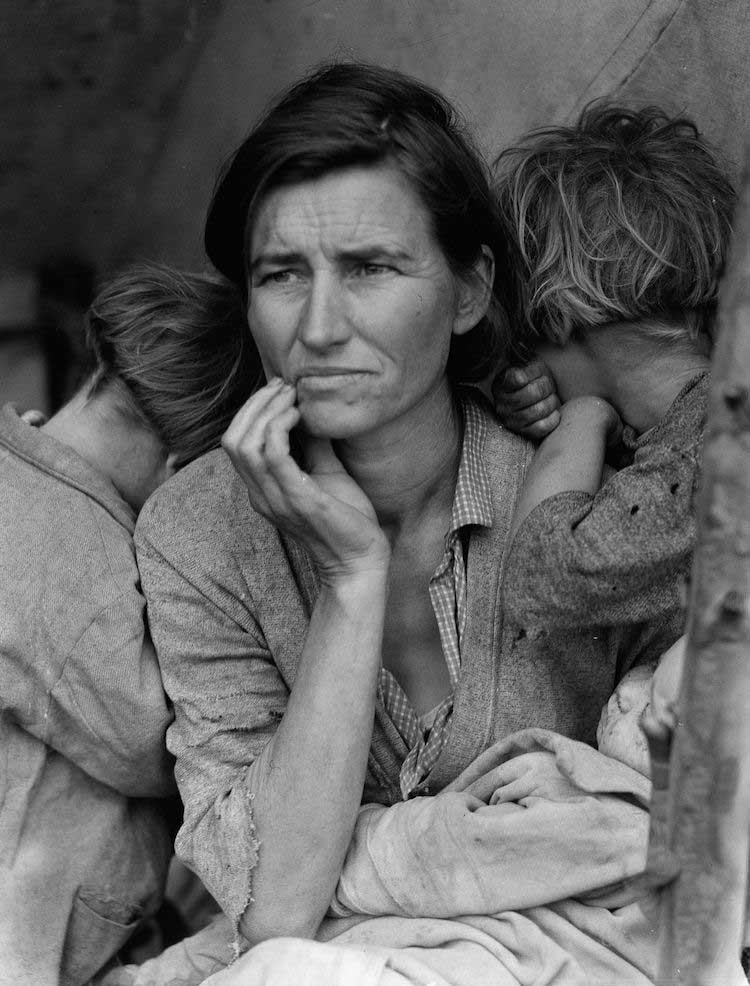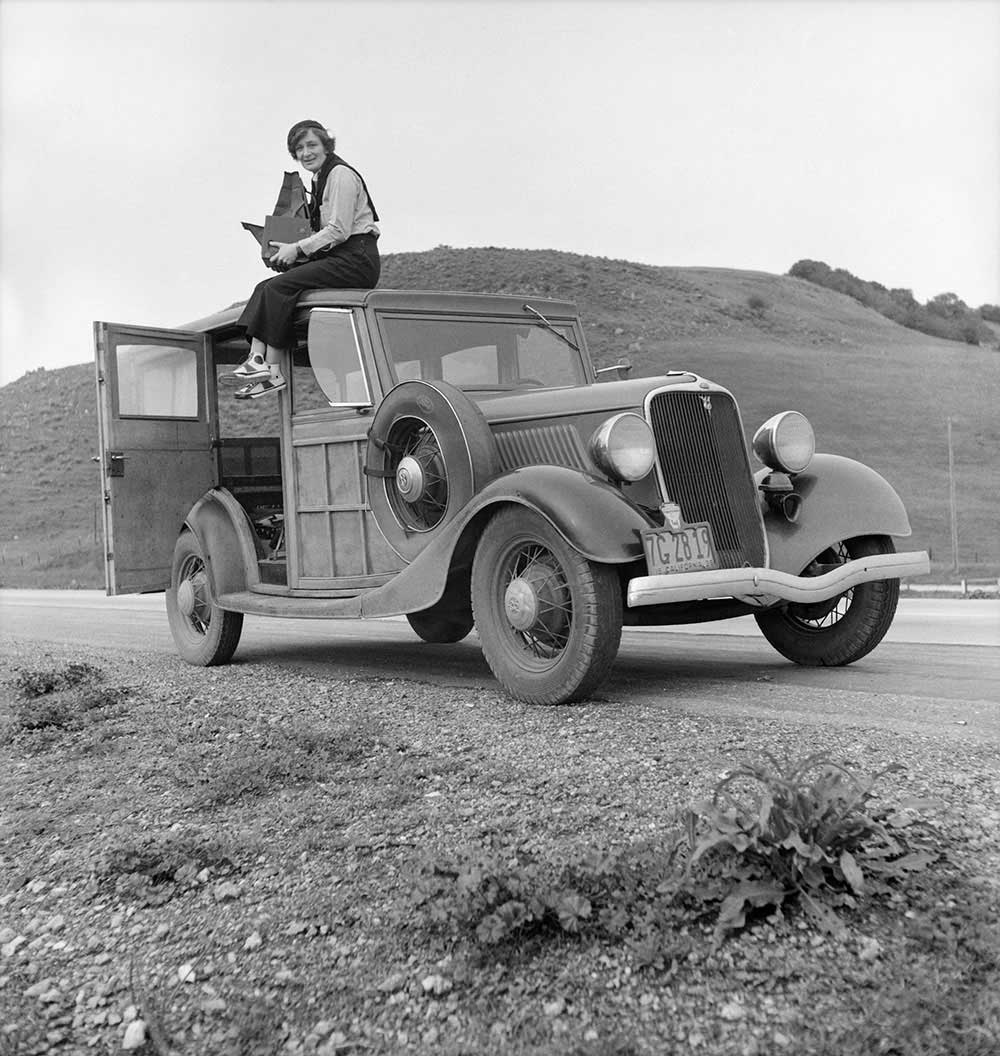Under the title of “Migrant Mother”, this portrait is one of the most iconic and famous snapshots in the history of the United States. The capture of Lange took place in 1936 during her visit to a pea collection camp. The woman in the photo is Florence Owens Thompson, and in a short time, her face became a universal icon by showing the strength and courage of immigrant workers.
In 1929, as we all know, the famous Wall Street Crash occurred. The American economy fell into a spiral. At its worst, around 1933, it left 15 million people unemployed: 13% of the total population in the United States. The economic situation was in itself terrible, but something worse was still missing: the 1930’s was characterized by a set of meteorological phenomena that further impoverished the countryside in the American Union.

After the well-known Dust Bowl, desolation became the norm: destroyed fields, farms buried in earth dunes. Faced with this (frankly apocalyptic) scenario, many families of farmers had to move. Internal migration to the west was unprecedented. In a single year, more people moved to western lands than during the gold rush.
Lange took this picture in 1936 while working on the program of the US Government ‘FSA’, which was formed during the Great Depression to raise awareness and help impoverished farmers. She met Florence Thompson and her children in Nipomo, California, in a camp full of field workers whose livelihoods were left in ruins by the failure of pea crops.
I saw and approached the hungry and desperate mother, as if drawn by a magnet. I do not remember how I explained my presence or my camera to her, but I do remember she asked me no questions. I made five exposures, working closer and closer from the same direction. I did not ask her name or her history. She told me her age, that she was thirty-two. She said that they had been living on frozen vegetables from the surrounding fields, and birds that the children killed. She had just sold the tires from her car to buy food. There she sat in that lean- to tent with her children huddled around her, and seemed to know that my pictures might help her, and so she helped me. There was a sort of equality about it.
Lange’s “The Assignment I’ll Never Forget: Migrant Mother,” Popular Photography, Feb. 1960
The portrait was one of the six photos she took of that woman and her children. Since she used a nitrocellulose plate film, it is impossible to know precisely the order of the series, however, it can be inferred that it began with an open location plane, slowly approaching until achieving a medium short-framing expression plane.
The first center that we perceive when facing this photograph is the face of the “migrant mother”, since it coincides with the best illuminated part of the scene while occupying a significant portion in the whole of the shot. The eyes of this worried face act as a center of interest although the gaze does not challenge us and is lost in the direction of the off-field.
While Thompson’s identity was not known for more than 40 years after the photos were taken, the images became famous. This portrait, according to Roy Stryker “has reached an almost mythical status, symbolizing, if not defining, an entire era in the history of the United States”. Dorothea tries to convey the mother’s concern with this picture; but more than that, the mother is an icon of the American people who migrated within the country itself under rather unfortunate conditions. Lange thus represented the precariousness of the situation in which millions of people were in the United States.
Recalling her meeting with Thompson years later, she said: “I saw and approached the hungry and desperate mother, as if drawn by a magnet. I do not remember how I explained my presence or my camera to her, but I do remember she asked me no questions.”
Thompson confessed and shared that she saw the photo with mixed emotions: on one hand, she was happy because she attracted attention and support to the area, but on the other, she never benefited from the photo. For her, it was more a reminder of how bad things got and how she resolved to never be so poor again.

The only benefit she got from the photo came at the end of her life. In 1983, she suffered from cancer and a recent stroke, and the cost of her care was proving unsustainable for her family. They made a public appeal and asked for funds to help the “Migrant Mother” to recover her health. Donations came from all over the country, accompanied by letters from people who had taken strength and inspiration from the photo of Florence. The appeal raised over $35,000.
Florence died of cancer and heart problems in Scotts Valley, California, on September 16, 1983. On her tombstone it reads: “Florence Leona Thompson: Migrant Mother: A Legend of the Strength of American Motherhood.”
Her image was immortalized on a stamp that honored her in 2008, while Dorothea Lange was included in the Californian Hall of Fame. Without a doubt, this photograph remains as one of the most complex and deeply emotional in history.







